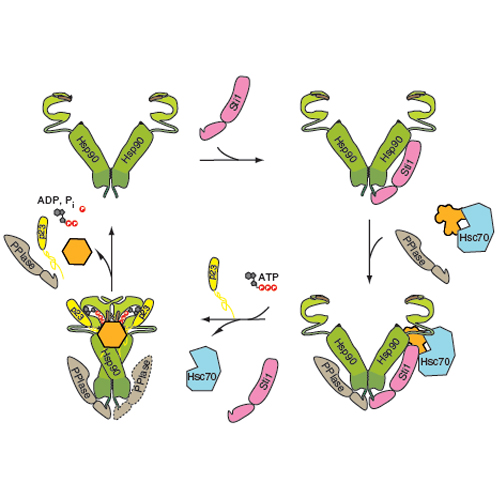Mixed Hsp90–cochaperone complexes are important for the progression of the reaction cycle
19-Dec-2010
Nature Structural & Molecular Biology, 2011, 18, 61-6 published on 19.12.2010
Nature Structural & Molecular Biology, online article
Nature Structural & Molecular Biology, online article
The chaperone cycle of heat shock protein-90 (Hsp90) involves progression through defined complexes with different cochaperones. It is still enigmatic how the exchange of cochaperones is regulated. The first cochaperone entering the cycle is the Hsp90 ATPase inhibitor Sti1 (Hop in human), which later is replaced by a prolyl isomerase (PPIase) and p23. We found, unexpectedly, that one Sti1 molecule is sufficient to completely inhibit the ATPase of the Hsp90 dimer. Upon addition of a PPIase cochaperone to the Hsp90–Sti1 complex, an asymmetric ternary complex is preferentially formed. This PPIase–Hsp90–Sti1 intermediate is important for the progression of the cycle. To expel the bound Sti1, the concerted action of ATP and p23 is required. This mechanism, which is strictly conserved between the yeast and human Hsp90 systems, presents an example of how, in a cyclic process, directionality of assembly and disassembly of protein complexes can be achieved.











